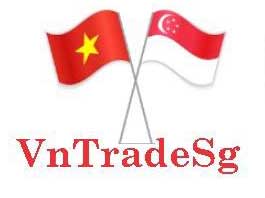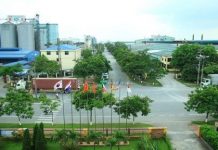- Strong demographic fundamentals are the basis for Vietnam’s real estate industry to grow.
- Foreign investors mostly invest through capital contribution and shares purchase to access the industry’s new segments including industrial and resort property.
- While still showing strong investment, tighter regulations will make the industry more transparent and efficient.
Vietnam’s real estate industry in 2019 was stable. Although supply decreased a significant 65.3 percent, the occupancy rate in big cities such as Hanoi and Ho Chi Minh City (HCM City) remained high at 89.7 percent.
As trade tensions start to stabilize, the outlook for the real estate industry in 2020 is expected to continue to grow due to rising domestic demand, new trends in share purchase and capital contribution in FDI and an emerging industrial property segment. We explore these three factors and what investors need to be aware if looking to invest in this industry.
Demand for retail estate remains high
Vietnam’s booming middle class and fast urbanization pace are the pillars for rising real estate demand.
According to the General Statistics Office of Vietnam, Vietnam’s GDP per capita in 2019 of US$2720 (7.7 percent YoY increase), have allowed Vietnamese to afford a middle-class apartment at US$1000 – US$2000 per meter square (m2).
In addition, a 5.7 percent increase in the minimum wage from 2020 may enable more people to join the market, spurring the demand for middle-segment apartments.
Vietnam’s middle-class has seen one of the fastest increases in ASEAN. According to Boston Consulting Group, between 2014 and 2019, the middle class doubled to 33 million people, making this segment a third of the population. This number is expected to continue to rise to 44 million in 2020 and 95 million in 2030.
Currently, 36 percent of Vietnam’s population resides in big cities such as Hanoi and Ho Chi Minh City. It is also expected that Vietnam’s urban population will rise 3.85 percent every year until 2050, much higher than ASEAN’s average rate of 2.1 percent.
The influx of migrants who actively look for an apartment to soon settle down in big cities keep the vacancy rate low in Hanoi and Ho Chi Minh City; in retail estate or office estate, this stands at 8 and 10 percent respectively. This vacancy rate was lower than other stronger economies such as Singapore with a 12 percent vacancy rate in 2019.
New FDI trends in real estate
While FDI pledges for new real estate projects suffered a 47.8 percent YoY decrease in October 2019, FDI through capital contribution and share purchase increased a significant 235 percent.
The capital contribution trend emerges as both domestic and foreign firms realize the complementary support that they can offer to each other.
Foreign investors are usually hesitant to enter the market because of inconsistent bureaucratic red tape and the changing legal environment. Therefore, cooperation with Vietnamese firms through share purchase and capital contribution enables foreign investors to get access to land plots, which are ready for construction.
This means the investor becomes a shareholder in the Vietnamese property firm. Chinese investors have managed to seize this opportunity with large investment inflow. Five out of the seven biggest capital contribution and share repurchase projects as of May 2019 belong to Chinese investors.
Due to the State Bank of Vietnam’s stricter control on bank loans to domestic real estate developers to avoid a market bubble, Vietnamese firms often turn to foreign investors through shares sales and joint ventures (JVs) as a new funding source.
This trend is likely to continue in 2020 as foreign investors’ demand for Vietnam’s real estate remains high.
New segments in the industry
According to Savills Vietnam, 2020 would see rising demand in new segments of the industry, including resort property and industrial property.
With more than 15 percent growth in the number of international tourists, it creates good opportunities for real estate developers in popular tourist areas such as Da Nang, Phu Quoc, and Nha Trang to introduce resort properties. Such resort properties are designed to harmoniously combine cultural characteristics and natural features.
However, the legal environment regarding this emerging type of property is still uncertain. Regulators have not yet agreed on the ownership duration and profit share mechanism of those properties.
Thanks to manufacturing companies’ transition from China amid the trade war and new free trade agreements (FTA) including EU-Vietnam FTA (EVFTA), industrial property is in high demand. In key industrial clusters such as Ho Chi Minh City, Binh Duong, and Dong Nai, the occupancy rate was as high as 81 percent as of Q2 2019.
According to Savills Vietnam, Vietnam’s advantage over China in attracting investors lies in its low rent. The average industrial rent is around US$100 – 140/m2/quarter, much lower than China’s US$180/m2/quarter. Key industrial clusters such as the Ho Chi Minh City command a higher price of US$160/m2, but are still lower than China’s.
Representatives of Tan Thuan export processing zone in Ho Chi Minh City identify that many industrial property developers would focus on building integrated facilities supplementing the manufacturing complexes in 2020. This would include retail properties for families, entertainment complexes, and education institutions. This presents golden opportunities for foreign investors to invest in this potential property segment.
Can Vietnam sustain the growth in the industry?
Despite the projected optimistic growth for 2020, regulatory challenges remain the main deterrent of the industry’s sustainable growth.
In 2019, many property firms were accused of selling “ghost” projects to customers, swindling up to VND2.5 trillion (US$107 million). To prevent real estate scams from occurring in the future, the government now obliges developers to submit complete construction plans, submit a progress report at each stage and subsequently publicize the information on their websites and construction sites.
Additionally, Circular 22/2019/TT-NHNN sets the ceiling for the proportion of short-term equity that can be used for medium and long-term lending from 60 percent to 40 percent. The ceiling prevents bank loans from being too accessible to property firms, especially fraudulent firms who can pay off the loans easily with swindled money.
Such regulatory oversight may make the approval process more rigorous leading to increased approval times but is an important intermediate step for Vietnam’s real estate industry to become more transparent and efficient.
Posted by Written by















